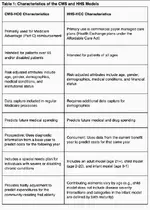2022 ICD-10-CM coding guideline changes
CMS Data Location: Each year, CMS posts all of the 2022 ICD-10-CM coding guideline changes on its website in six separate downloadable ZIP files:
 www.cms.gov
www.cms.gov
DRG
https://www.cms.gov/files/zip/fy202...factors-and-geometric-and-arithmetic-mean.zip
- 2022 POA Exempt Codes (ZIP)
- 2022 Conversion Table - Updated 08/27/2021 (ZIP)
- 2022 Code Descriptions in Tabular Order (ZIP)
- 2022 Addendum (ZIP)
- 2022 Code Tables, Tabular and Index (ZIP)
- FY 2022 ICD-10-CM Coding Guidelines (PDF)
CMS Data Location: Each year, CMS posts all of the 2022 ICD-10-CM coding guideline changes on its website in six separate downloadable ZIP files:
- 2022 POA Exempt Codes (ZIP): CMS description of POA Exempt Codes
- 2022 Conversion Table – Updated 08/27/2021 (ZIP)
- 2022 Code Descriptions in Tabular Order (ZIP)
- 2022 Addendum (ZIP)
- 2022 Code Tables, Tabular and Index (ZIP)
- FY 2022 ICD-10-CM Coding Guidelines (PDF)
- Note: Zip files are a way to condense large amounts of data into smaller file sizes to be accessed more quickly.
- Click on the file you want to download
- A “Save As” window should pop up asking you where you’d like to save the file to download.
- Choose the folder you’d like to download the data into and click the “Save” button at the bottom right of the window.
- Click on the ZIP folder you downloaded. You should see an “Extract All” button at the top right of the window that opens.
- Click the “Extract All” button. This will take you to a “Select a Destination and Extract Files” window. The folder you choose will be where the data is extracted into.
- Click on the “Browse” button to choose your folder, and then click the “Extract” button at the bottom of the window to decompress the files
2022 ICD-10-CM | CMS
COVID-19 Update In response to the ongoing national emergency concerning COVID-19, the Centers for Disease Control and Prevention’s (CDC) National Center for Health Statistics (NCHS) is implementing 3 new diagnosis codes, Z28.310, Z28.311 and Z28.39, into the International Classification of...
DRG
https://www.cms.gov/files/zip/fy202...factors-and-geometric-and-arithmetic-mean.zip
Last edited:





